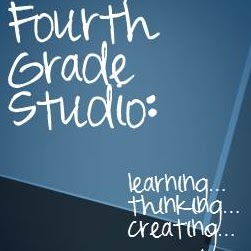If you haven't heard of the "Genius Hour " or the "Passion Project" movement, I'll try to give you the essence of it. As you know, there are highly successful corporations who approach the workplace in an "outside of the box" sort of way. You may know that Apple and Google are two of those companies--companies that try to create rich environments where creativity and individuality are prized and cherished. Google instituted a program that they coined "20% time" where employees were encouraged to work on ANY project (with some exceptions, of course) that they had an interest or passion in--and they found that some of their best and most innovative advances were made by employees during this time!
So how does this apply to teaching?
As you know, the increased focus on standards
and assessments
and data
and accountability
have led to some educators feeling like less and less time is available for the types of activities that trigger excitement and innovation in the classroom. The "Genius Hour" movement is geared toward trying to impart part of this back into the classroom! Whether it's a true "hour" or some other period of time...the genius hour is geared toward putting some control back in students' hands and allowing them time to delve into a topic of interest to to them. Something they are PASSIONATE about. Something where they can practice all those authentic 21st century skills. Something that makes a difference.
I have been unable to trace the origins of the "movement", but the book by Dan Pink entitled "Drive" is a great starting place. Most teachers are asking students to pick a topic (with coaching), create a learning plan, and then spend a chunk of time (could be an hour a week, could be done in other ways) diving in and researching, learning, organizing, sharing--and, eventually--presenting their findings.
So . . . a student like my son might gather some resources
Start generating some research questions . . .
"What kinds of jobs are there in baseball?"
"What kinds of statistics to do they keep in baseball?"
"How much are baseball cards worth?"
"What statistics are most important when electing someone to the Baseball Hall of Fame?"
Once each student (or maybe teams) have generated a quality research question, the fun begins! Students take ownership of their project plans, learn valuable research skills, and eventually share their new learning with their classmates. Can you IMAGINE how much potential this has? You can make it as big of a deal or as small of a deal as you want. You could try it once in a year or have it be a regular thing. I have decided to give it a try--and I will be following up with it here and on my blog!
Want to get learn more? There are tons of blogs that are beginning to tackle this topic, but CLICK HERE for a great place to get started! Make sure to watch for my updates--the good, the bad, and the ugly!
 |
| Bad research question: How many bobbleheads does it take to clutter up a teenager's bedroom? |
or find me on Twitter at @FourthGrStudio
or Instagram @Fourthgradestudio

















0 comments:
Post a Comment